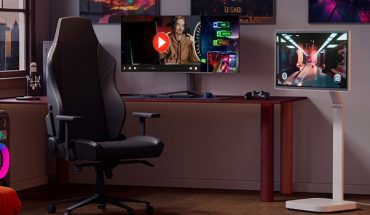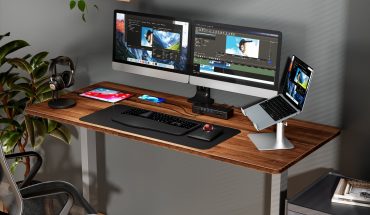Most devices come with a charging/power cable in the box. Lately, with USB-C becoming the standard for most mobile devices, some manufacturers are foregoing including a cable. Most people have dozens of USB-C cables at home that can be used interchangeably anyway. But USB-C cables aren’t the only kind you need for your essential tech. What’s more, not all cables, USB-C and otherwise, are created equally.
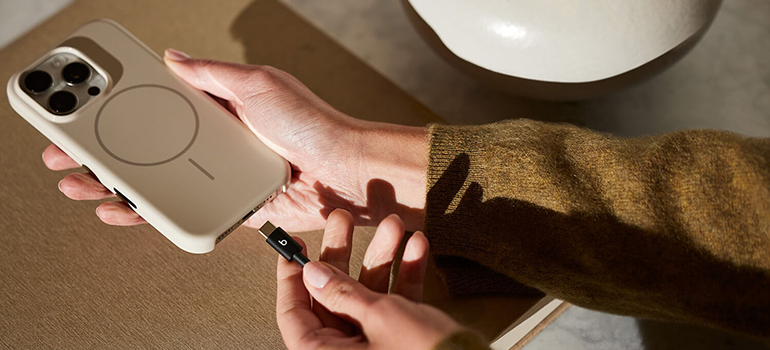 Types of Cables Every Household Should Have
Types of Cables Every Household Should Have
If you’re looking to stock up on cables, here’s a quick checklist of every type of cable a household should have.
USB-C: The most ubiquitous type of cable for mobile devices today, USB-C cables come with just about every smartphone, tablet, portable Bluetooth speaker, and other mobile devices. These are interchangeable so you can use the same one for many devices, including the latest iPhones.
HDMI: These cables are used to transmit HD video and audio between devices, like a TV and a Blu-ray player, laptop, gaming console, even streaming stick. There are high-speed, ultra-high-speed, ones with Ethernet built-in for networking, and standard types. For 4K video, you’ll need a high-speed that can support the transmission of 4K signals.
Ethernet: Connect networked devices with a wired set-up using an Ethernet cable, like a router or modem, printer, or even your laptop. While most devices are wireless nowadays, you’ll need a few Ethernet cables for the main source devices, like a modem.
USB-A: While USB-A is being phased out, replaced by USB-C, there are still many devices that have USB-A ports. You’ll find them in many older-model laptops, older portable speakers, vehicles, power blocks, and travel adapters. Most hotels nowadays still have USB ports on things like alarm clocks and lamps. So, it’s a good idea to keep a few USB-A cables around, including USB-A-to-USB-C cables.
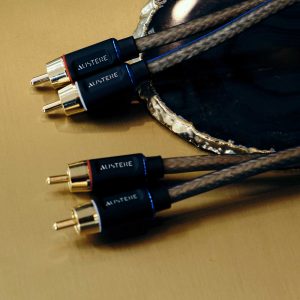
RCA
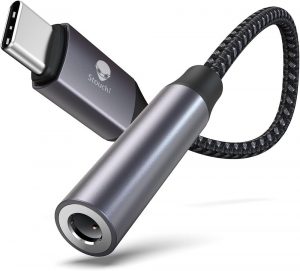
3.5mm
RCA: These cables are used to connect audio equipment within home theatre set-ups. You’ll find the ports in things like speakers and soundbars.
3.5mm Audio: While most sources work wirelessly now, if you want to connect a pair of wired headphones or in-ear monitors, you’ll need a 3.5mm audio cable. Note that if you want to use wired headphones with a mobile device that doesn’t have a 3.5mm port, you will need an adapter.
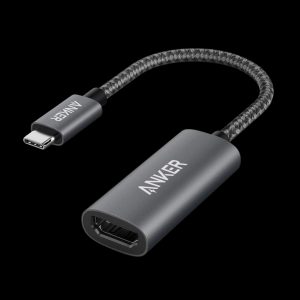
HDMI-to-USB-C
Adapters: There are so many types of adapters worth looking into that help you connect devices that otherwise wouldn’t be able to connect. Use an HDMI-to-USB-C adapter, for example, to connect a laptop that doesn’t have an HDMI port to your TV. Use a USB-C-to-3.5mm adapter to connect a wired pair of headphones or earbuds to your smartphone that doesn’t have a headphone jack. USB-C-to-USB-A and vice versa adapters also allow you to continue to use legacy devices.
What Makes a Good Cable?
The debate continues as some question if expensive cables are worth the money. Admittedly, some of what you find in stores is just marketing, clever price hikes for purported features, brand reputation, or even just nicer designs and packaging. But there are instances where it’s worth paying extra for cables and it’s not just all hype.
Durable Design: Cables with braided jackets are constructed to withstand breakages, twists, and kinks, as well as even inclement weather. This is useful if you plan to keep the cable in your vehicle through the frigid winter, for example, or use it outside in the humid summer. It will help prevent fraying and the cables getting tangled as well. You also want thicker cables with thicker conductive wired inside.
Safety Testing: Any cables on store shelves in Canada should meet proper safety testing. But if you’re buying from a second-hand store or online, you should always check to ensure they have a recognized certification mark, including CSA, cUL, or cETL. This confirms that they meet the Canadian Electrical Code (CEC) safety and compliance requirements. When in doubt, don’t use it. While you might be tempted to buy cheap cables, it’s not worth the risk to provide power to a device that, in some cases like with phones, is worth $1,000 or more.
Power: Some cables can deliver more power than others, which is important depending on what you want to charge. Even if a cable offers more power than your smartphone can support, for example, it will adjust accordingly while offering the benefit of being able to charge other devices at maximum speed. Data transfer speed matters as well if you’re using the cable for transferring data from one device to another. Keep in mind that the power block you use matters, too, and you’ll need one that supports fast charging as well.
Cable Length: I always keep an extra-long cable in my carry-on to ensure it can reach in those awkward places in a hotel room. I also have one at home so I can comfortably charge my phone while still using it on the couch. Shorter cords, meanwhile, are good for a cleaner set-up where the outlet is in plain view, like on your office desk. But having some long cables that are 10-feet and longer negates the need for extension cords.
Essential Cables and Adapters for Travel
When I travel, I bring a variety of cables and adapters so I’ll always have what I need. In fact, I have invested in a small power block that I exclusively keep in my carry on so it’s always there when I need it. Here’s what you should have with you.
Different Types of USB-C Cables: Keep both USB-C-to-USB-C and USB-C-to-USB-A cables on hand. Most multi-port wall adapters have a mix of USB-C and USB-A ports. You never want to run into a situation where you have all cables with USB-C on both ends and not enough ports to accommodate them. Plus, when out and about, you’ll more likely to find USB-A ports in spots like airports and hotels than you will USB-C. While charging will be slower, at least you’ll be able to charge everything at once. You can find clever 2-in-1 cables that have dual tips or ones in a T formation. They usually have USB-C on one side and Lightning on the other for older Apple devices, or even two USB-C tips on one cable.
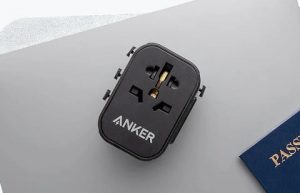 Travel Adapter: As noted, I always keep a travel adapter in my bag. I get one with folding prongs so it packs neatly, and with multiple ports, ideally at least two USB-A and two USB-C. (Note that ones with more USB-C ports will be more expensive but can charge your devices faster.) The latest adapters have key features to consider. PD, which means Power Delivery, affords faster and more efficient charging through USB-C. There’s also GaN chargers, which use gallium nitride to afford smaller designs with faster charging. These will cost a bit more but will be worth it.
Travel Adapter: As noted, I always keep a travel adapter in my bag. I get one with folding prongs so it packs neatly, and with multiple ports, ideally at least two USB-A and two USB-C. (Note that ones with more USB-C ports will be more expensive but can charge your devices faster.) The latest adapters have key features to consider. PD, which means Power Delivery, affords faster and more efficient charging through USB-C. There’s also GaN chargers, which use gallium nitride to afford smaller designs with faster charging. These will cost a bit more but will be worth it.
Country-Specific Adapter: If you’re traveling somewhere that uses different voltage and plugs, you’ll need a country-specific adapter or converter. You can find kits that include all types of plugs for world travelers, or country-specific ones. Note that Canada, the U.S., Japan, and Mexico all use the same types of outlets. But you’ll need different ones for regions like Europe and countries like India, China, and Australia.
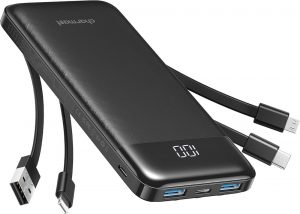 Portable Power Bank: Along with the right cables, I always pack a fully charged portable power bank. I’m partial to ones with built-in cables so that you don’t need to bring along yet another loose cable. Some have multiple built-in cables to charge different devices. Find one with at least 10,000mAh capacity to recharge a device like a phone multiple times per charge. Charging and battery indicator lights are important as is pass-through charging so you can plug the charger in to recharge while it charges your device at the same time.
Portable Power Bank: Along with the right cables, I always pack a fully charged portable power bank. I’m partial to ones with built-in cables so that you don’t need to bring along yet another loose cable. Some have multiple built-in cables to charge different devices. Find one with at least 10,000mAh capacity to recharge a device like a phone multiple times per charge. Charging and battery indicator lights are important as is pass-through charging so you can plug the charger in to recharge while it charges your device at the same time.
Do A Cable Checklist
While you might find that your kitchen drawer is overflowing with USB-C cables that come with just about everything, they are useful to have. With so many to spare, grab a few and toss them into your backpack, purse, or briefcase so you always have one on hand. Don’t forget to get ones with USB-A on the other end as well so you can connect to outlets in public places like coffee shops and airports, as well as older hotels.
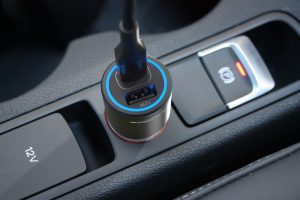 Get a few multi-port adapters with a mix of both USB-C and USB-A ports. Invest in smaller GaN chargers, especially for travel, along with chargers that have a PD port. If you’re on vacation or a work trip and looking to recharge your smartwatch, phone, or camera quickly when you pop back into the room to shower and change for dinner, you’ll appreciate the fast-charging capabilities.
Get a few multi-port adapters with a mix of both USB-C and USB-A ports. Invest in smaller GaN chargers, especially for travel, along with chargers that have a PD port. If you’re on vacation or a work trip and looking to recharge your smartwatch, phone, or camera quickly when you pop back into the room to shower and change for dinner, you’ll appreciate the fast-charging capabilities.
For the home, invest in durable, high-quality and high-powered cables for connecting things like home theatre gear, headphones, modems, and more.
Finally, don’t forget a portable power bank. If you don’t want to pay more for one with built-in cables, use one of those extra loose USB-C cables you have lying around and wrap it around it so you’re never left without a way to connect for power on the go.
Note that while you’ll get the fastest charging experience with wired charging, you can also consider wireless chargers for the home or via MagSafe for charging on the go. The charging rate for wireless chargers will always be slower, but they’re great for slow charging at work or emergency top-up charging on the go. Look for Qi2 chargers, the fastest wireless charging standard right now, which currently works with limited devices that support it, like the latest iPhones.
-30-

